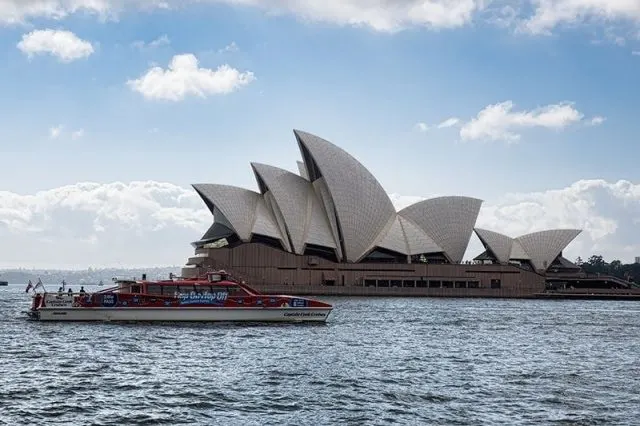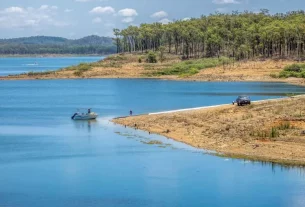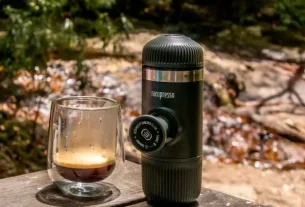Table of Contents
The Opal Card
If you’re spending a few days in Sydney you’ll probably want to pick up an Opal card. It’s a smart card that can be reloaded and works on all NSW government public transport in the greater city area in addition to intercity trains and some regional bus services.
It took only a few minutes to pick up a card from the terminal in the airport and unlike many cities, there’s no charge or deposit for the card, you just load it up with as much as you need. If you aren’t arriving via the airport there are plenty of other stations and terminals where you can get a card from throughout the city. Topping up is equally easy, if you’re only visiting you probably won’t want to register and set up auto top-ups on the card but most stations and ferry terminals had machines where you can add from $10 at a time.
Not only is the electronic card much more convenient and a cost-saving over paper tickets there is a whole range of additional caps and discounts associated with it. Here are a few you will want to be aware of
- All you can use Saturdays, Sundays and public holidays are $8.40. Go anywhere on the network and pay no more than $8.40, which worked perfectly for us when we arrived on a weekend and started getting orientated. The other caps don’t start accumulating until Monday.
- A daily $16.80 cap no matter how many trips you take or what forms of transport. We hit this cap a few times on day trips around the wider city area. Public transport in Australia isn’t super cheap but this helps keep it reasonable for the traveller on a budget.
- A $50 weekly cap
- Only pay for 8 paid journeys then the rest of the week’s travel is free.
- Pay no more than $25 in Airport Access Surcharge for the week
There are a few tricks for new users to watch out for if you want to maximise your cap savings.
- The Airport surcharge is excluded from all the caps – other than the airport access surcharge cap of course.
- The week runs Monday to Sunday for all weekly benefits
- A journey groups together any form of transport when there are less than 60 minutes between tapping off one and onto the next. This can be a bit confusing and you may think you have taken way more than 8 trips but the definition of a journey is slightly different.
Overall from our experience, we found the Sydney public transport was clean and efficient, stuck pretty much to the timetable and offered reasonable value for getting around. We put $80 on each card for the week which covered airport transfers and all other transport.
You could have done the same for a bit less if you’d scheduled with cost-saving in mind, the big difference would be having the hours gap between tapping off and back on and saving the longer ferry trips for later in the week. We ended up paying for 13 individual trips, not 8 because of the combining journey rule. Still, we thought that was great value for hopping the ferries and trains whenever and wherever we wanted.
The ferries

Initially, the heritage green ferries may look a bit dodgy but we came to love the character of the different boats which range in size from little HarbourCat class on the inner harbour routes to the big Freshwater that we took out to Manly.
You want one of these big boats if you are going out that close to the heads as although you’ll stay within the harbour you do come very close to the entrance and even with the minimal breeze it can become a bit chopping as you turn across the tide.
The best part of using the ferries is not only the big time saving getting to many destinations but the fabulous views of the Opera House, Harbour Bridge and the many cliffs, coves and bays along the edge of the harbour. There’s multi-million dollar real estate dotted all along here and if you’re headed anywhere to the right you’ll get a glimpse of Kirribilli house, the second home of Australia’s Prime Minister.
The fleet of 28 boats covers over a million kilometres a year keeping commuters connected on either side of the sprawling harbour.
The trains
The train system is frequent and efficient. Throughout the city, all the trains we used were the two-story design with a smaller platform level area with 8 seats and standing room at each entry door. Use of these seats is prioritised for those most in need who would find the stair access to the main seating carriages challenging.
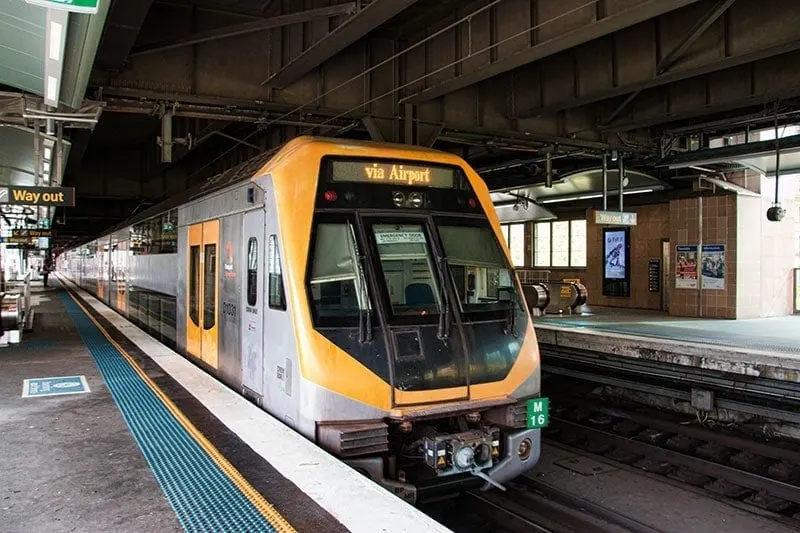
The station facilities were of a mixed standard. Mostly I would say they were clean and we felt safe in the daytime and into the evening. We arrived in the city via the Museum station which had no working lift and had to carry two large cases and hand luggage up three steep flights of stairs, by contrast, Town Hall station which turned out to be slightly closer to our accommodation, and Circular Quay station which we used regularly, had both lift and escalators working.
The buses
We only caught one bus and that was from the Taronga Zoo wharf up to the main entrance at the top of the hill. I hadn’t realised you needed to pre-purchase your zoo tickets if you wanted to use the gondola access up the hill at the start of your visit.
The bus service was clean with an easy tap on and off. Australian buses are entered through the door at the front of the bus next to the driver and can usually be exited from the front or rear door.
What are the other options?
On the harbour
There were a few places you couldn’t get to with city ferries that other companies will stop at. If you wanted to get to some of the islands in the harbour other than Cockatoo Island you would need to use another provider. One example is the hop on hop off ferry, a one-day ticket will cost $40, you can do a 60-90 minute tour of the harbour or get on and off at any of the 9 stops. The ferry includes 3 island stops that aren’t available on the Opal Card with Sydney ferries (Fort Dennison, Shark Island and Garden Island).
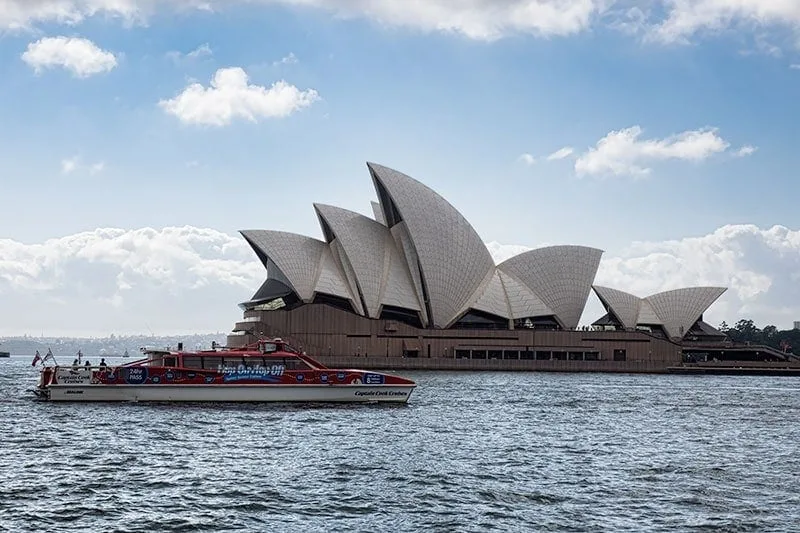
There are also water taxi services running that provide an alternative. Personally, we never found the need for them and they are a very expensive option but it’s useful to know it’s available.
Organised tours
Trains and buses can get you to most places you want to go but may involve a bit of waiting and connections so if your time is more limited than your finances tours may be an option. We aren’t really fans of any form of organised tour but that’s just us, they can provide a load of local knowledge and the back story to the places you visit that you wouldn’t otherwise know about.
The Sydney Explorer buses
The Syndey BigBusExplorers are distinctive topless double-decker buses that are another option to get you around the city highlights and out as far as Bondi. For $59 you can get on and off at any of the 34 stops as many times as you want to during a 24-hour period from when you first use it.
Be aware though the buses don’t operate around the clock, they start at 8.30 am and shut down at 6 pm during summer or 5 pm during the winter. The buses hit each stop approximately every 20 minutes so you won’t be waiting too long to move on to the next stop and while you’re on board you can learn a bit about the city from the recorded commentary.
Sydney public transport in summary
Sydney is a city that is easy and cost-effective to find your way around using the ferries, trains and buses.
We didn’t miss having a car during our stay. Most city hotels will charge extra for parking and we felt a rental car would have been more of a hindrance than an asset within the city itself. The exception might be if you had some extra time and wanted to get out of the city and have some flexibility to explore areas such as the Hunter Valley wine region or into the Blue Mountains for a night or two.
If you have any questions about the Sydney public transport system I haven’t covered please drop me a message in the comments below or through the contact section of the website. If you have any additional tips about getting about in Sydney or saving a few dollars while you do please share them with other readers in the comments.
